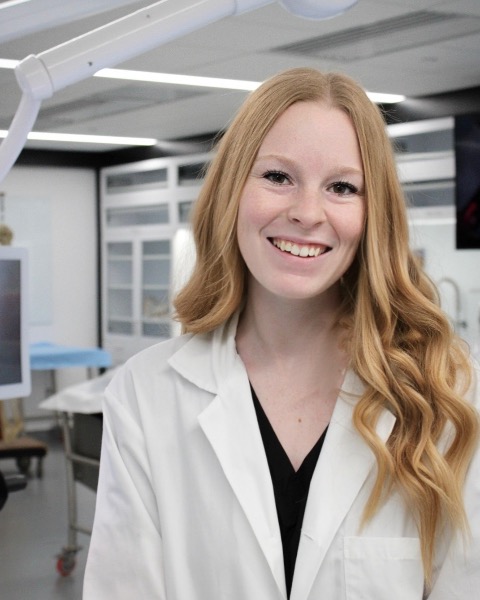Back
Anatomy Education: Undergraduate Education Posters
Poster: Anatomy Education: Undergraduate Education Posters
164 - Musculoskeletal (MSK) Anatomy Learning Across Aamc-accredited Medical Programs – a Preliminary Report
Sunday, March 24, 2024
5:00pm – 7:00pm US EDT
Location: Sheraton Hall
Poster Board Number: 164
There are separate poster presentation times for odd and even posters.
Odd poster #s – first hour
Even poster #s – second hour
Co-authors:
There are separate poster presentation times for odd and even posters.
Odd poster #s – first hour
Even poster #s – second hour
Co-authors:
Jason Peeler, PhD - Associate Professor, Max Rady College of medicine, University of Manitoba

Taylor Orchard, BSc
Graduate Student - PhD
University of Manitoba
Winnipeg, Manitoba, Canada
Presenting Author(s)
Abstract Body : Introduction and Objective: A clear understanding/ability to apply anatomy knowledge in a clinically relevant manner is key element of physician training. Despite this, data from AAMC-accredited (American Association of Medical Colleges) medical programs indicates that the total time dedicated to human gross anatomy instruction has decreased over the past decades. Musculoskeletal (MSK) injuries/diseases are among the most common medical conditions treated by physicians, yet little information is available regarding the MSK anatomy learning environment across AAMC-accredited medical. The purpose of this investigation was to document the current state of preclinical MSK anatomy education across AAMC-accredited medical programs. Materials and Methods: A MSK anatomy survey (20 questions) was sent to AAMC-accredited medical programs. Results: To date, 27 responses have been received from MSK course representatives at accredited medical programs. Preliminary data indicates that the mean time spent learning preclinical MSK anatomy was 57.6 hours (±57.6, range 4 – 280) with 13 of the programs integrating MSK anatomy teaching into the clinical learning environment. All programs reported using cadaveric-based instruction and radiological correlates to supplement physician’s learning, and a majority of programs included surface anatomy (19/27) as part of their preclinical MSK anatomy curriculum. Diverse modes of MSK anatomy instruction were utilized by all programs, with didactic lectures (22/27) and self-study (23/27) being the most frequent forms of instruction. 16 programs reported that individuals with a clinical designation were directly involved in the delivery of their MSK anatomy curriculum. While a variety of learning resources were used to support student learning, the most common forms were anatomy atlases and program-specific notes packages. Summative and formative assessments were used by the majority of the programs (25/27), with end-of-course written examinations (23/27) and ongoing in-course evaluation (23/27) being most popular. Conclusion: These preliminary results serve to document the current state of preclinical MSK anatomy education across AAMC-accredited medical programs, and illustrate large program-to-program variability. Significance/Implication: The results represent an important “snapshot in time”, and suggest a need for AAMC-accredited medical programs to provide more consistent and comprehensive preclinical programming in the area of MSK anatomy education. Future research should work to establish consistent course guidelines and accreditation standards for preclinical MSK anatomy education, and examine the effect that the MSK anatomy learning environment has on postgraduate physician knowledge retention.

